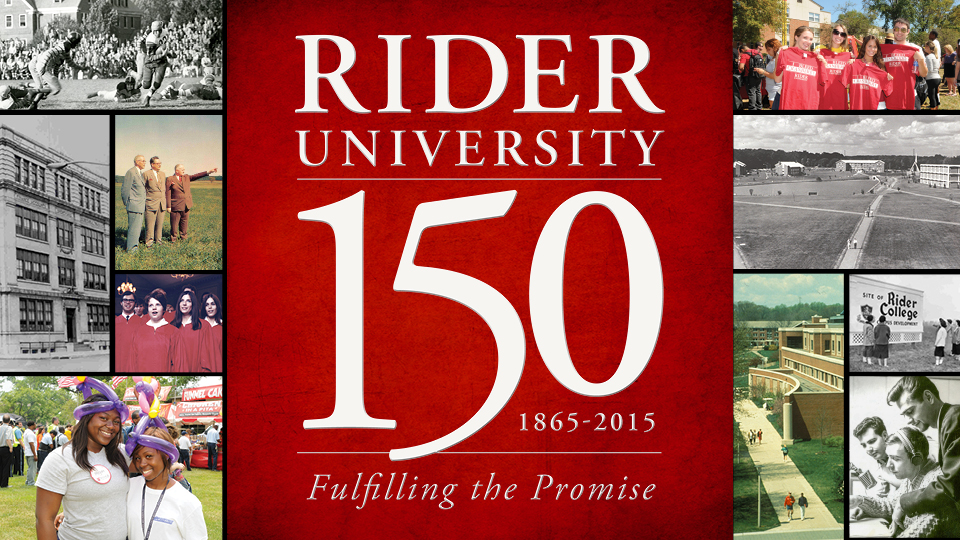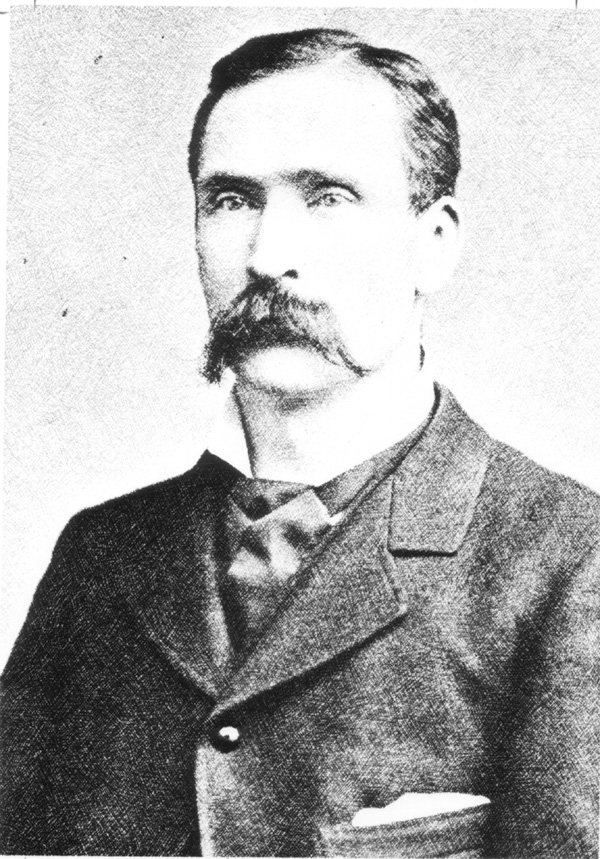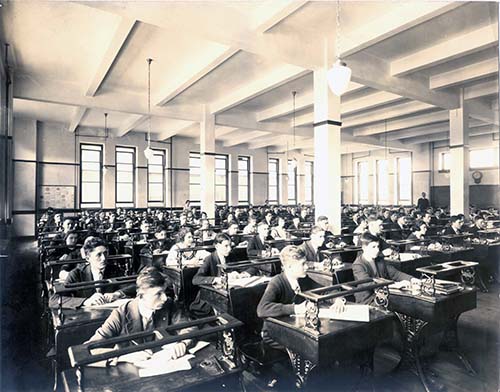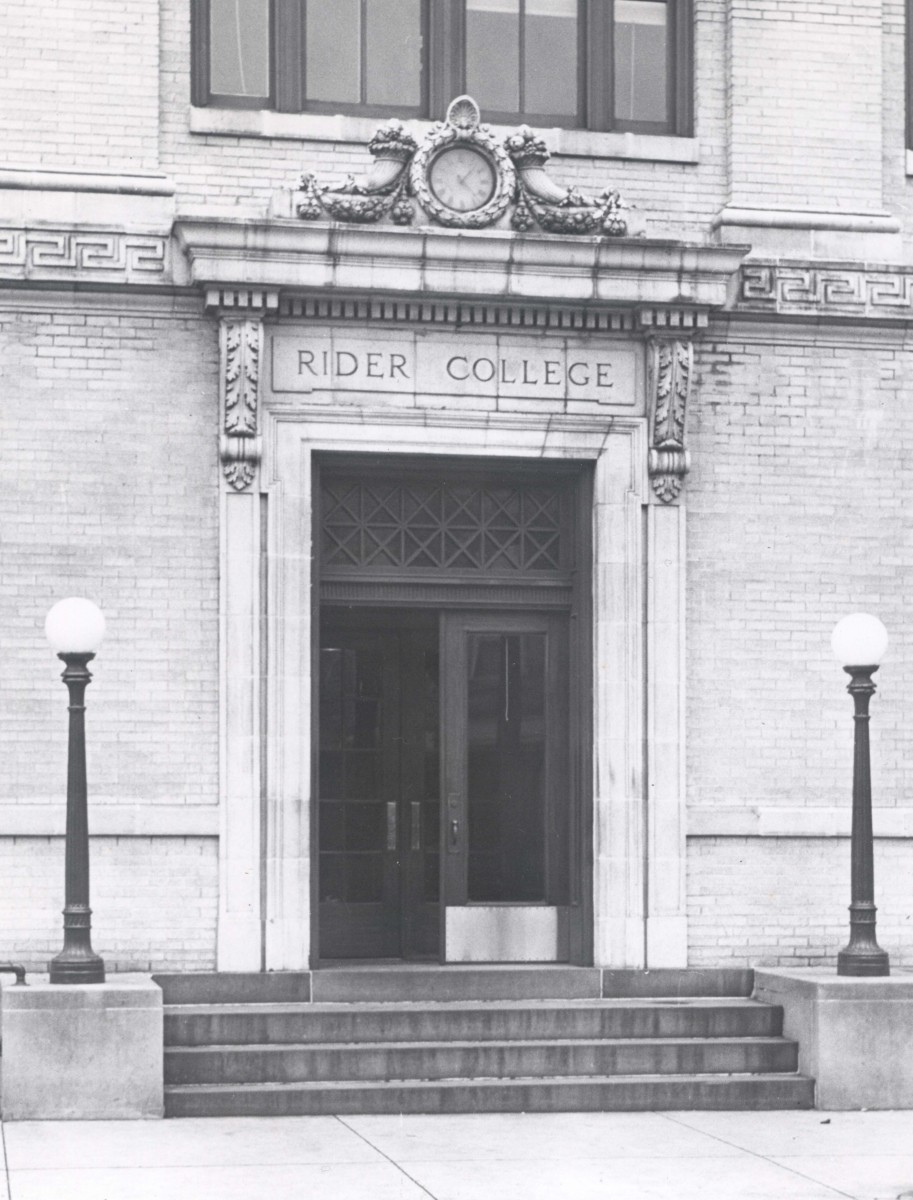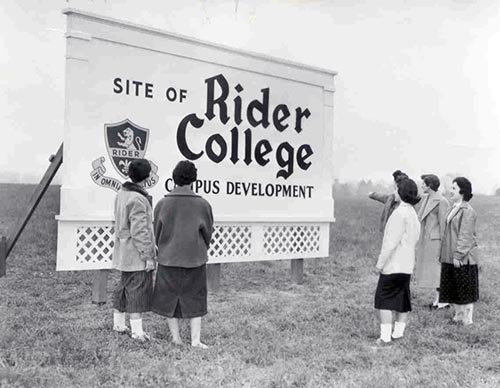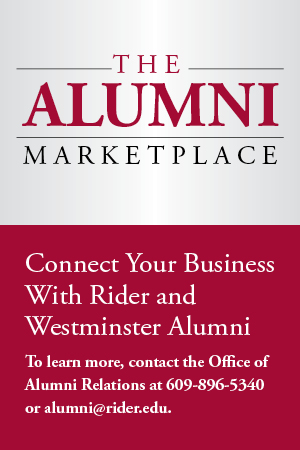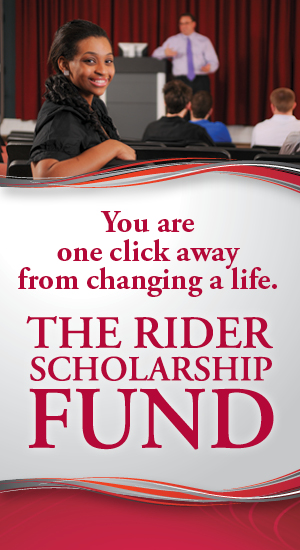by Adam Grybowski
More than 2 million U.S. veterans returned to civilian life in the late 1940s. Recognizing the need for an education to help them secure work and better their lives, Rider College hired more faculty, initiated a night session and bought property to convert into classrooms, office space and dormitories. Even the College Sweet Shop – a popular spot with students that wasn’t officially part of the college – was converted into a classroom. With so many enrolling veterans, the Trenton-based business school graduated 800 students in 1949, the most in its history.
From its founding in 1865 through the mid-20th century and up to the present day, Rider has embraced changes such as these to serve its students, helping them cultivate the necessary skills and qualities to find success in an evolving world.
“We proudly state today that we are a student-centered institution, but where did that begin?” asks Walter Brower ’48, dean emeritus of the School of Education and unofficial University historian. “That mission began with Andrew J. Rider, and the presidents who have followed have tried to live up to that.”
Before it bore the name “Rider,” the University went through its first incarnation as the Trenton Business College, one of several business schools begun by H.B. Bryant and Henry D. Stratton. It was founded during a wave of private business college openings after the Civil War, when the demand for office workers was strong. A graduate of Bryant and Stratton’s chain of business schools, Andrew J. Rider was a 23-year-old teacher when he moved to Trenton in 1866 and became Trenton Business College’s third principal. Two months later, he was part owner and the college’s first president.
While typewriters hadn’t yet appeared on American shores, Trenton Business College students received instruction in penmanship and other practical skills for establishing a vocation. Rider was adamant about providing relevant instruction that would equip students to be successful in business and industry. “We are unique in that we began as that little private business school down the street,” says Brower, whose first book about Rider, Full of Promise: The Story of Rider College, covers the founding through 1994. “Rider’s beginning was far different from those of institutions established by religious sects or by government.”
At the time of the College’s founding, Trenton was emerging as an industrial powerhouse, producing steel, rubber, wire, rope, linoleum and ceramics. The John A. Roebling Wire and Rope Company, Trenton Iron Company, and Whitehead Brothers Rubber Company were becoming major manufacturers that contributed to the infrastructure of the entire nation. They all needed workers, and not just on the factory floor. The companies employed scores of office workers, many as bookkeepers.
“The firms just grabbed the Rider graduates,” says Brower. “Rider was very much a part of the development and growth of Trenton.”
Trenton Business College, which would become the College of Business Administration, was incorporated under the name Rider Business College in 1897, and Andrew J. Rider was named its first president. As he shifted his attention to other business interests, particularly his cranberry bogs in Hammonton, N.J., Rider offered the presidency to a penmanship expert on the faculty named Franklin Benjamin Moore.
Moore presided over several mergers and consolidations, perhaps most important the merger with Stewart Business School, a competitor that threatened the college’s livelihood. “The competition became very keen, and there was the feeling in 1901 that one or the other was possibly going to fail,” Brower says. “The merger solidified Rider’s role in the profession in Trenton and in the world of academia.”
Leading the newly minted Rider-Moore and Stewart School with Vice President J. Goodner Gill, Moore constructed the College’s first building, a 50,000 square foot structure that still stands on East State Street. (Rider had previously rented all its facilities.) A month after the building opened its 24 classrooms, the College officially changed its name to Rider College.
Under Moore and Gill, Rider became a degree-granting institution, developed an alumni association and introduced athletic teams. After 34 years of leading the College, Moore and Gill died within six weeks of each other in 1934. “The school was stunned by the death of those two men,” Brower says. Their two sons filled the void, with Franklin Frazee Moore becoming president and John Goodner Gill becoming the college dean. “The two sons simply picked up where their fathers left off and began to chart the future of the institution,” Brower writes in Full of Promise.
In 1950, 16 years into his tenure as president, Moore recognized several challenges looming for the college, despite the recent success of recruiting veterans. Rider lacked regional accreditation and a campus large enough to accommodate a growing student body. Rider also suffered from what Moore saw as an image problem among city residents. “The citizens of the area looked at the main college building at the corner of East State and Carroll streets and still thought of the College as that private business college that began in 1865,” Moore said at the time.
Historical Timeline
Understanding that space wasn’t available in Trenton, the College began a search for a new campus. “There was no trepidation,” says Brower, whose second book on Rider’s history, Keeping the Promise, which covers the University from 1995 through 2012, will soon be published. “If there was going to be a future for Rider, the feeling was that we had to move.”
Rumors swirled that the College would relocate to Red Bank. Saranac Lake floated an offer to lure Rider to New York. The Board of Trustees considered several sections in the greater Trenton area, including the campus of Westminster Choir College in Princeton, which would merge with Rider in 1992. Amid these speculations, Moore continued his push to receive accreditation — an achievement he deemed essential to Rider’s future. Several nearby universities, including Rutgers, Temple and University of Pennsylvania, were already accredited, meaning a third party had ensured their trustworthiness and educational quality. Moore had been lobbying the Middle States Association for 20 years for the recognition, but because Rider was considered a specialized business institution and the association lacked such a category, the College was ineligible for accreditation. When an appropriate category was added in 1955, Rider was granted full accreditation on its first attempt.
The following year, realtor Morton Kline noticed 140 acres of farmland in Lawrenceville, fewer than five miles from the college campus. Pate Farm was nothing more than a dairy farm in rural Lawrenceville, Rider’s neighbor to the north, but when Kline brought the discovery to Moore’s attention, he recognized it as a solution to Rider’s constricted campus, a place where the College could grow while maintaining its key position between New York and Philadelphia. The Board of Trustees adopted a resolution to purchase the property in 1956.
Seven months later, on April 27, 1957, a thousand people gathered on the farm to watch the groundbreaking ceremonies. Freshmen began attending classes on the new campus in 1959 and by 1964 – three years ahead of schedule – the Lawrenceville campus was fully functional. By moving Rider to Lawrenceville, Moore built a foundation that his successors, Frank N. Elliott, J. Barton Luedeke and Mordechai Rozanski, would use to further strengthen the institution.
The groundbreaking of the new campus, Rozanski says, “marked the beginning of an era of growth for Rider that we built upon in subsequent decades — from merging with Westminster in 1992 to earning university status in 1994 under President Luedeke’s leadership, to the recent implementation of new programs and new majors, innovative international partnerships, and our continued efforts to meet the needs of today’s students and tomorrow’s workforce.”
Celebrating 150 years as a leader in higher education, Rider is completing a decade of unprecedented growth and refurbishment of the Lawrenceville campus and the opening of the Marion Buckelew Cullen Center on the Westminster campus. “Today, the quality of a Rider education, the dedication of our community, the talent of our students and the successes of our alumni are all a testament to the rich history we share,” Rozanski says. “Our programs are distinctive and of the highest quality, and we can look back on our past 150 years with pride and to our future with confidence.”

